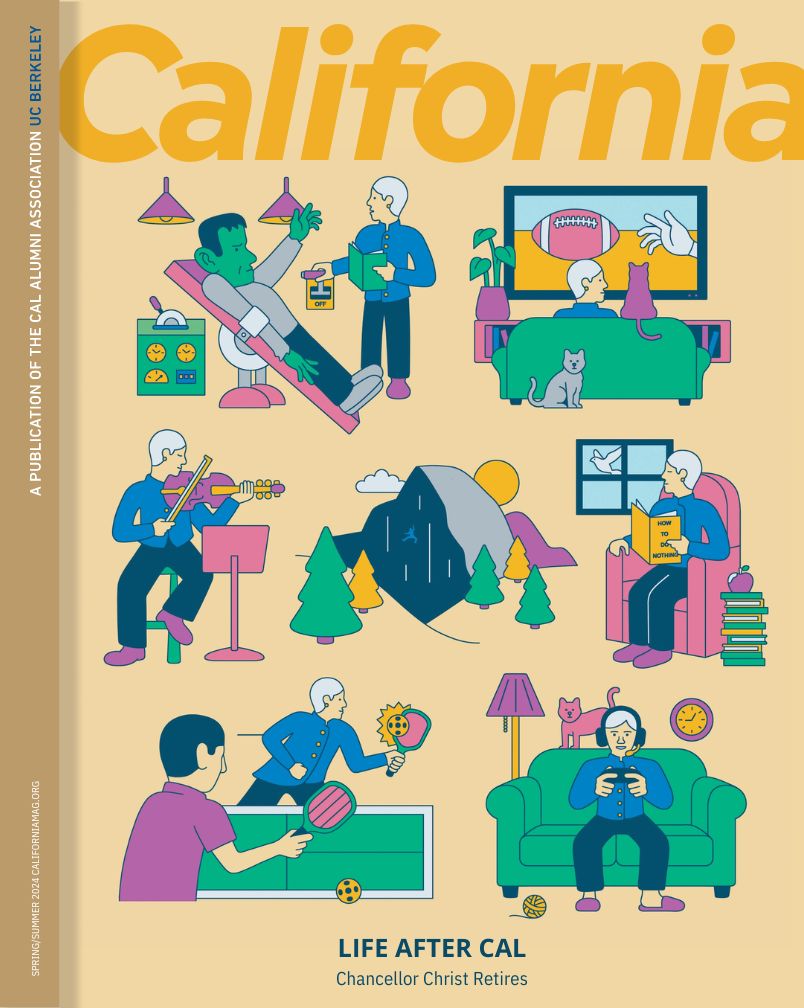When it comes to the existence of Santa Claus, it’s tough to find reliable sources. A quick Google search will lead you to theories ranging from Santa being a commercialized hoax used to sell Coca-Cola, to Santa being a shaman stoned on psychedelic mushrooms. These explanations, mixed in with the usual Illuminati and CIA conspiracies, aren’t of much help when your kids get to that pesky age where skepticism becomes as cool as Ugg boots and Legos. Wait, those are still cool, right?
It’s this time of year when I used to badger my mom endlessly with the question, “Is Santa Real?” Without fail, she would cheerfully respond, “I believe he is.”
But she didn’t, or at least not in the way I meant the question. (Does a big man in red come down our chimney on Christmas Eve?)
In his new book, Does Santa Exist?, Eric Kaplan wrestles with this conundrum.
Kaplan began pursuing his Ph.D. in analytic philosophy at UC Berkeley in the mid-90s, but got a little sidetracked on the way to finishing his degree. He’s in the process of completing it now. Forgive him; he’s been quite busy. In 1996, Kaplan began writing for Late Show with David Letterman, and eventually went on to write for shows including Futurama, Flight of the Conchords and The Simpsons. He currently writes for and co-executive produces The Big Bang Theory.
But philosophy keeps reeling him back in, this time with a little Christmas spirit.
“I’m not really advocating that you take my mixture and swallow it. I’m just showing you how I did it, so you can do it yourself.”
Does Santa Exist? begins with the epistemic dilemma that my mom struggled with: a parent’s choice between what he or she actually believes, and what a parent thinks his or her children should believe. Ultimately, Kaplan encourages the reader to “look at questions of what exists or what is true in the context of what kind of life we would want to live, both as individuals and as a community.”
This might mean radically changing our beliefs about Santa Claus. Kaplan writes, “Yes, there’s something good about science and autonomy, but there’s also something good about the way children look at the world that we shouldn’t throw off with disdain…why lose any of it?”
For Kaplan, the price of giving up on Santa is too high. “Myths engage the imagination. And when we participate in myth, we have a fluid sense of boundaries between us and the world.”
Essentially, don’t throw out the Santa-believing baby with the bathwater.
More than a discourse on St. Nick, Kaplan’s book is a roadmap for dissecting larger debates we have about constructing our own personal ideologies. For his purposes, Santa is a way to “sneak past the sensors” that go off when we confront the nuanced and polarizing topics of faith, science, or culture that repeatedly evolve into irresolvable debates. Reminding anyone of Thanksgiving dinner?
The secret sauce, says Kaplan, is comedy.
“In comedy, we play with each other—switching who will be the boss of whom, and who will win and who will lose,” writes Kaplan. “And we play with opposing ideas and opposing horns of a paradox. The sudden switching of top to bottom and bottom to top makes us laugh. If we do it right.”
Does Santa Exist? isn’t philosophy and comedy’s first tango together. In Plato and a Platypus Walk into a Bar, philosophers Thomas Cathcart and Daniel Klein coined the word “philogagging” to describe the use of jokes to explain philosophical concepts. In past years, the DeCal Program at Berkeley has offered a class called “The Simpsons and Philosophy.” Heck, Socrates was even known to crack a joke or two back in the day: “By all means, marry. If you get a good wife, you’ll become happy; if you get a bad one, you’ll become a philosopher.”
Kaplan, however, believes comedy can do more than simply explain philosophy; it can enlighten. Humor has the unique ability to link our intellectual mind with our emotional one—allowing critical thinking, but also leaving room to acknowledge that there can be two sides to a conversation, both deserving a voice.
Nor is he alone out there on this comedic limb. In his autobiography, Last Words, George Carlin echoes Kaplan, illustrating the power a laugh can spark: “It’s very Zen-like, that moment…that message hits the brain and the laugh begins. That’s when new ideas can be implanted. If a new idea slips in at that moment, it has a chance to grow.”
From Sarah Silverman and John Locke to Isaac Newton, Williams Wordsworth, and René Descartes, Kaplan takes the reader on a journey of philosophy, comedy, science and art aimed to release us from the dogmatic clench in which we hold our beliefs.
From there, Kaplan says, the decision is ours. Yes, he answers the question, “Does Santa exist?,” but writes, “I’m not really advocating that you take my mixture and swallow it. I’m just showing you how I did it, so you can do it yourself.”
I recently asked my mom what she meant all those times she professed her belief in Santa Claus. She said it was partially her way to deflect the question. But also, she added, “at some level, it was about my belief in what Santa Claus can represent—a spirit of giving, a willingness to believe in magic, a sense of wonder.” I can’t help but think this is exactly what Kaplan has in mind.



















